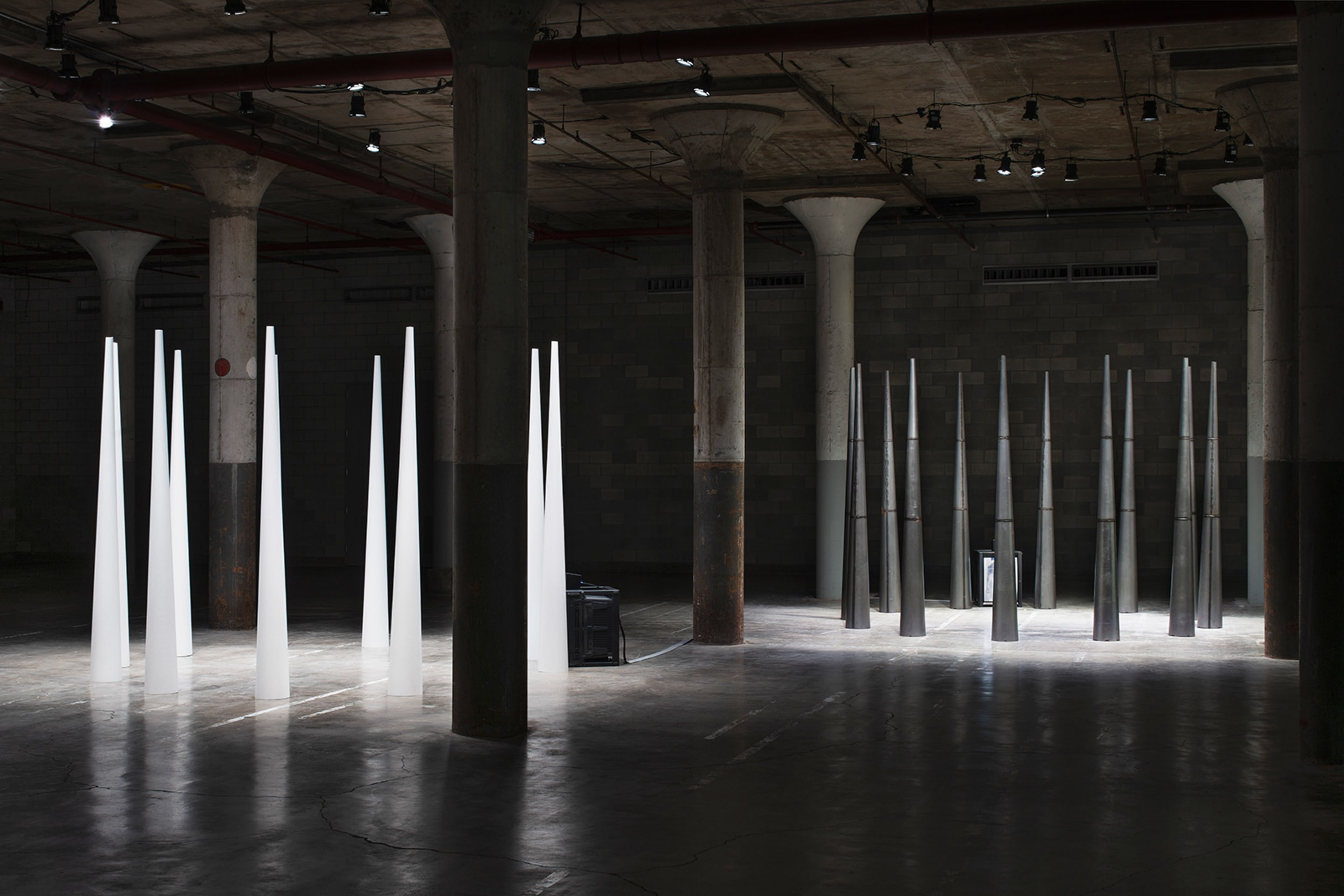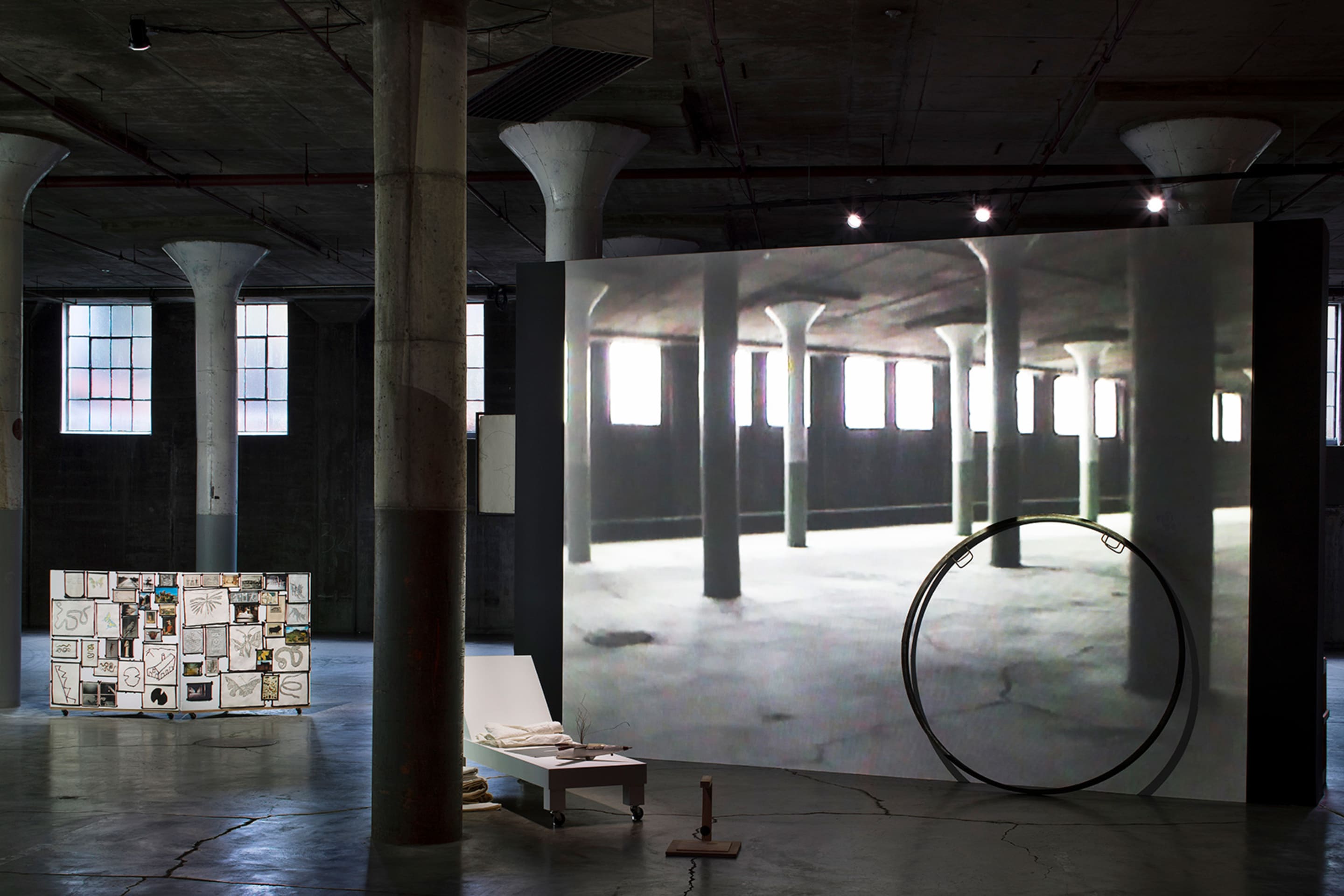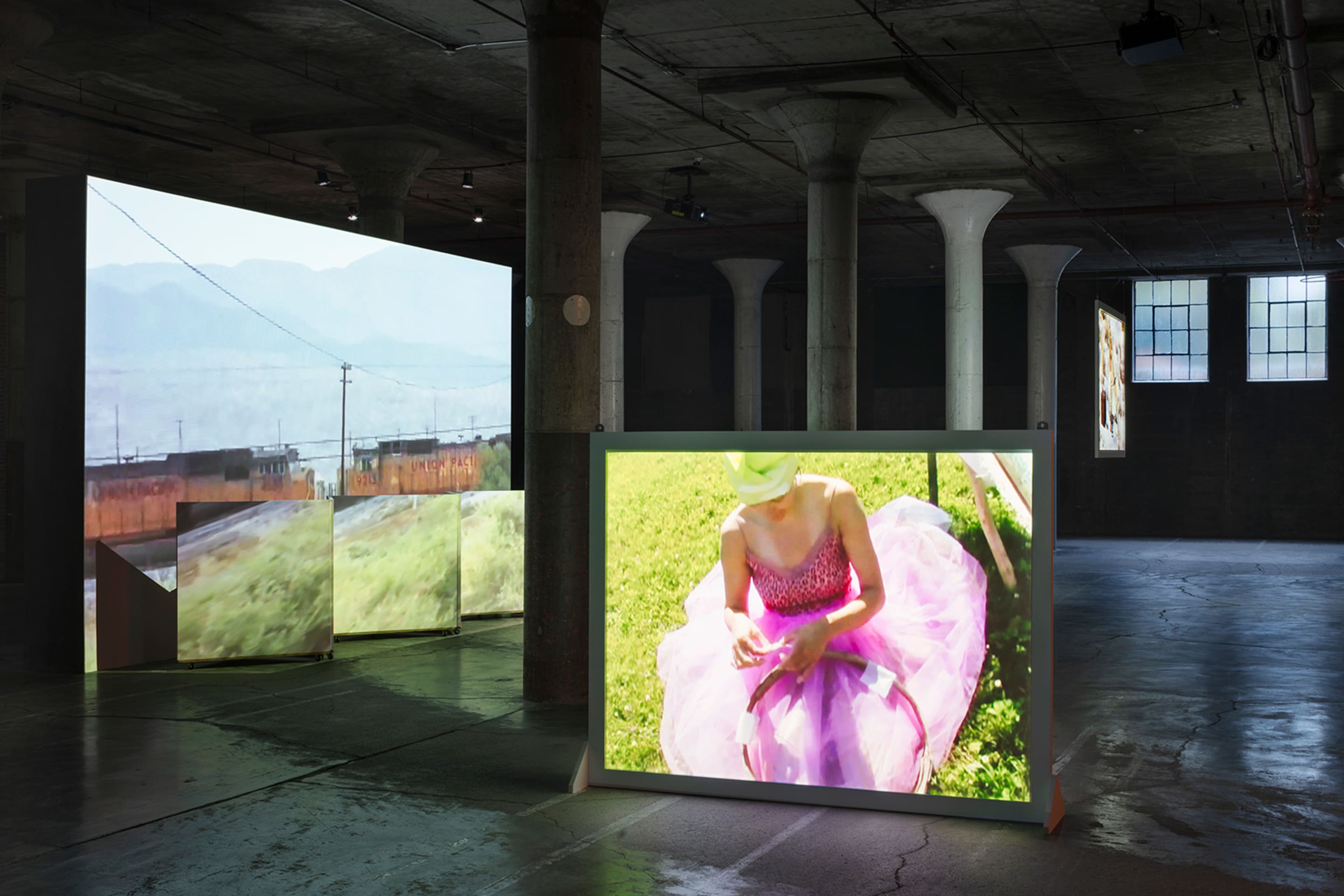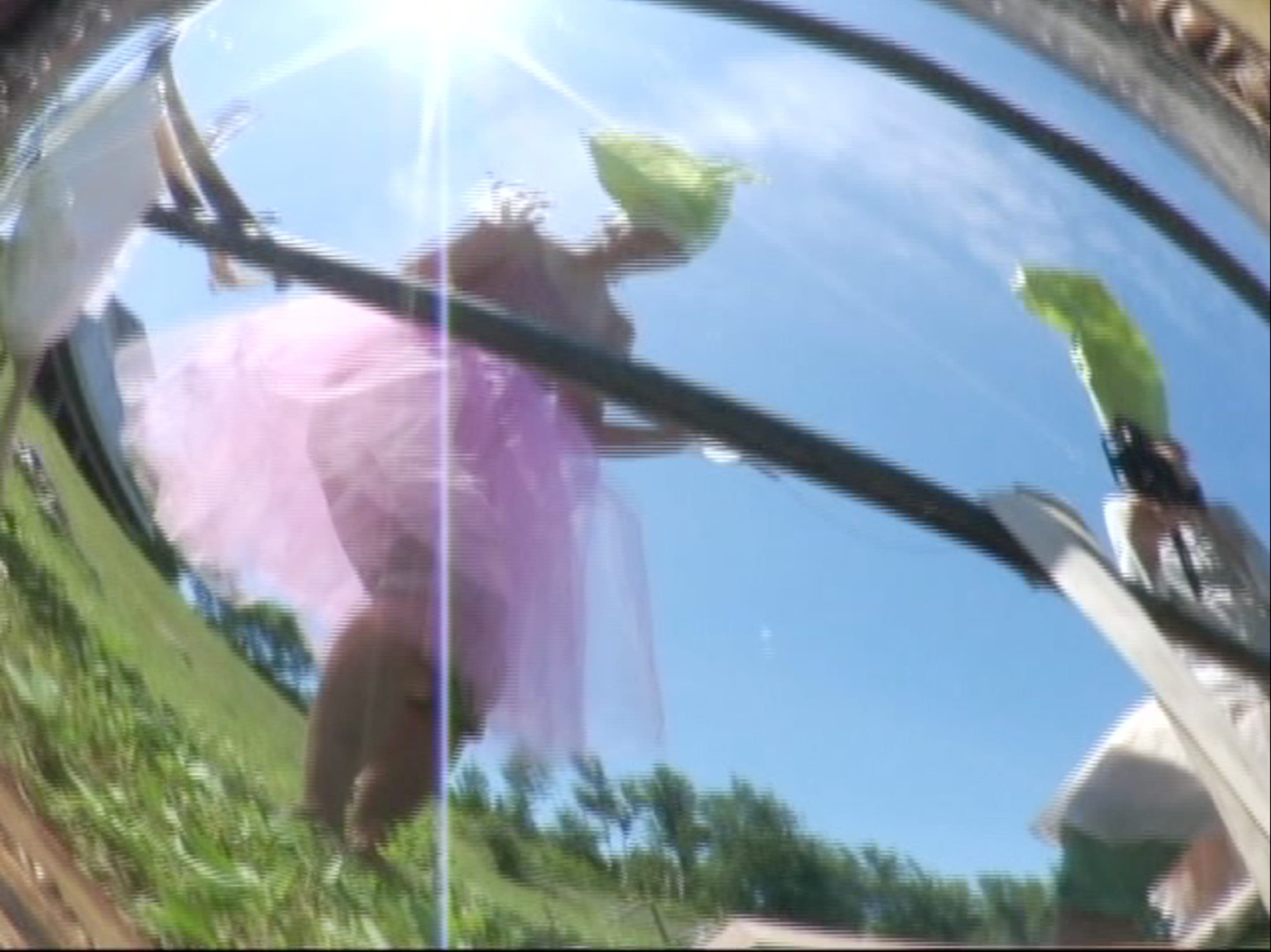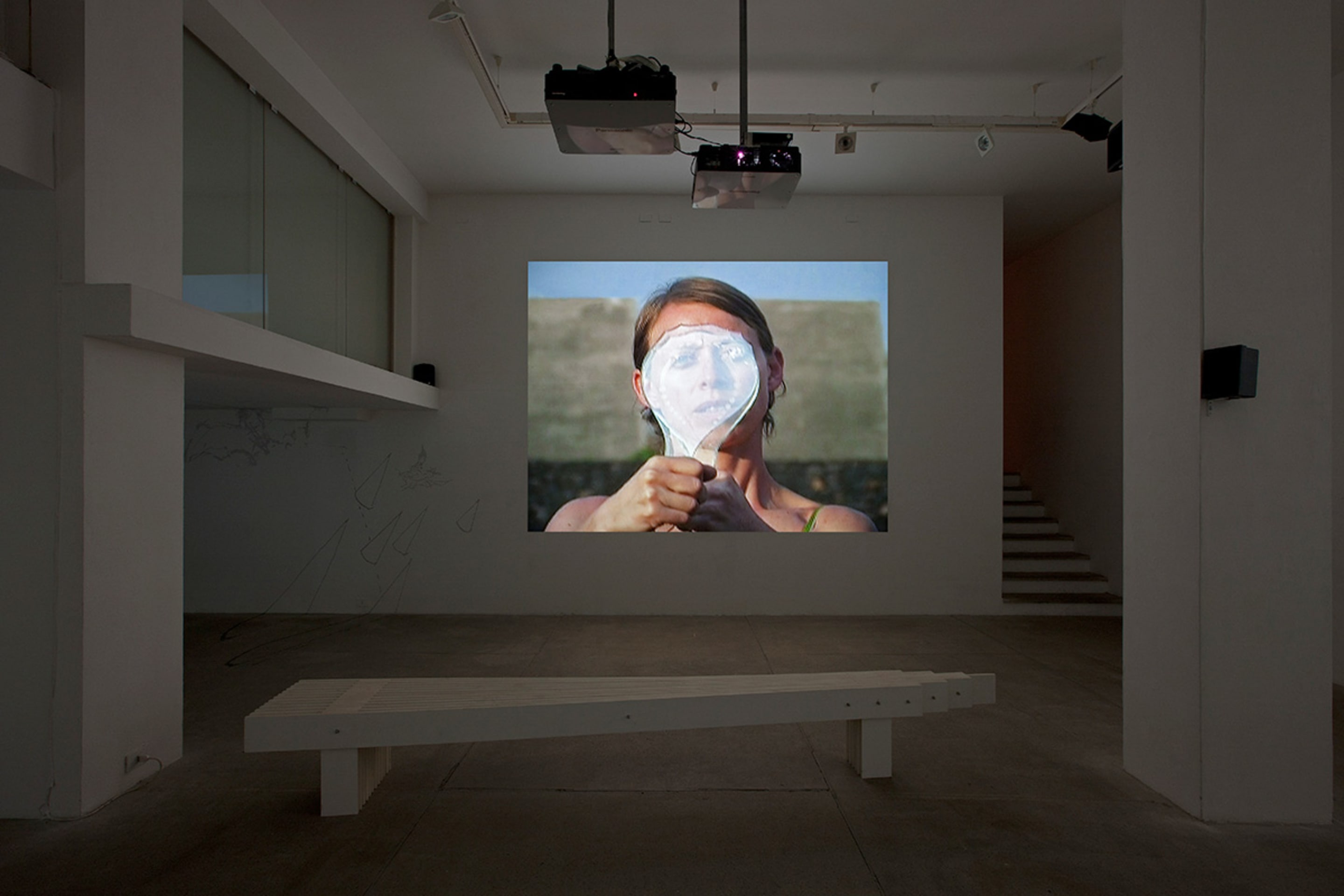Focus On: Joan Jonas
Galleria Raffaella Cortese presents Focus On: Joan Jonas, fifth instalment in this series of in-depth viewing rooms devoted to artists in the gallery program, on the occasion of the artist’s solo show at Dia, on view from October 8, 2021. The exhibition, presented in Dia Beacon’s lower-level galleries, features two recently acquired works, Stage Sets and After Mirage (Cones/May Windows), which Jonas conceived as part of her seminal interdisciplinary body of work, Mirage, in 1976. The large-scale multimedia installation The Shape, the Scent, the Feel of Things (2004), which was commissioned as a performance for Dia Art Foundation in 2005–06, is also included in the show at Dia Beacon, New York. Collectively, these three works present a compelling trajectory of the artist’s oeuvre from the pivotal year of 1976, when Jonas decisively turned to translating nonlinear performance and video into performance installations, to the evolution of the artist’s work thirty years later. This online viewing room further expands on this trajectory and includes works related to Jonas’ multimedia performance and installation Reading Dante (2007–10).
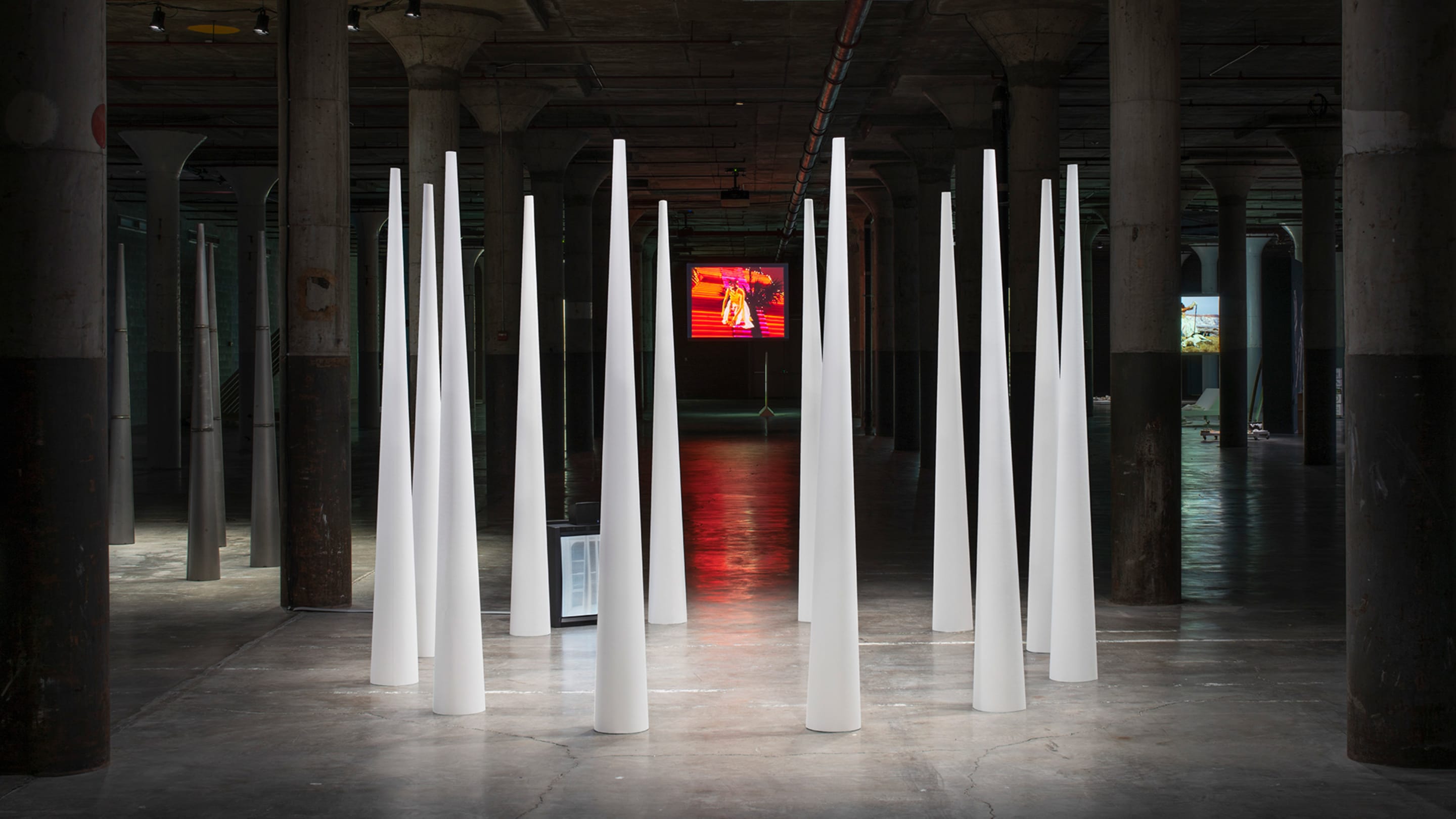
© Joan Jonas/Artists Rights Society (ARS), New York. Photo: Bill Jacobson Studio, New York. Courtesy Dia Art Foundation, New York.
American artist Joan Jonas is a founding figure of performance, video, and installation who has relentlessly pushed the boundaries of contemporary art in over five decades of artistic practice. After studying sculpture and art history, in the late 1960s and early 1970s she became one of the founding figures of performance in New York, where the artist was born and still lives and works. Throughout her career Jonas has made works employing a complex vocabulary of moving images, gestures, representations, and narratives, often collaborating with visual artists and musicians. In the artist’s videos, performances, and installations, which draw upon a range of sources, from fairy tales to essays, from myths to local folklore, these materials find new relationships to contemporary life, both poetically and politically.
Jonas created Stage Sets for her first solo exhibition, which was held at the Institute of Contemporary Art (ICA), University of Pennsylvania in Philadelphia. Composed of elements from several different performance works, including Funnel (1974) and Mirage (1976), Stage Sets was what Jonas referred to at the time as an “environment”. Suspended paper walls, punctuated with horizontal rods, receded toward a hoop, as in the set for Funnel. Metal cones, like those used in Mirage, were also suspended from the ceiling, directing light into pools on the floor. Other components included replicas of an accounting chair Jonas used in Organic Honey, a ladder, a suspended rooflike structure, a tall, mirrored compartment topped with a red, open-frame conical form, a large, sloped table with drawings, and a mirror with a mechanical moth toy. Jonas also included wall drawings related to those that appear in the film and performance Mirage (1976). The ICA billed the exhibition as “an environment and four events,” a five-part program comprising the environment Stage Sets (1976), and four related events: a performance of Mirage (1976); the premiere performance of The Juniper Tree (1976), commissioned by the ICA for an audience of children; a screening of Jonas’s films; and continuous daily screenings of a program of Jonas’s videos. In 2018, Jonas reconstructed Stage Sets (1976/2018) at Tate Modern, London, and the work was subsequently acquired by the Dia Art Foundation, New York, acquired the installation Stage Sets (1976/2018) in 2019.
The cone was an instrument to channel and direct sound to the audience. I whispered, sang, yelled into both ends. I looked through it and listened to it.
–Joan Jonas
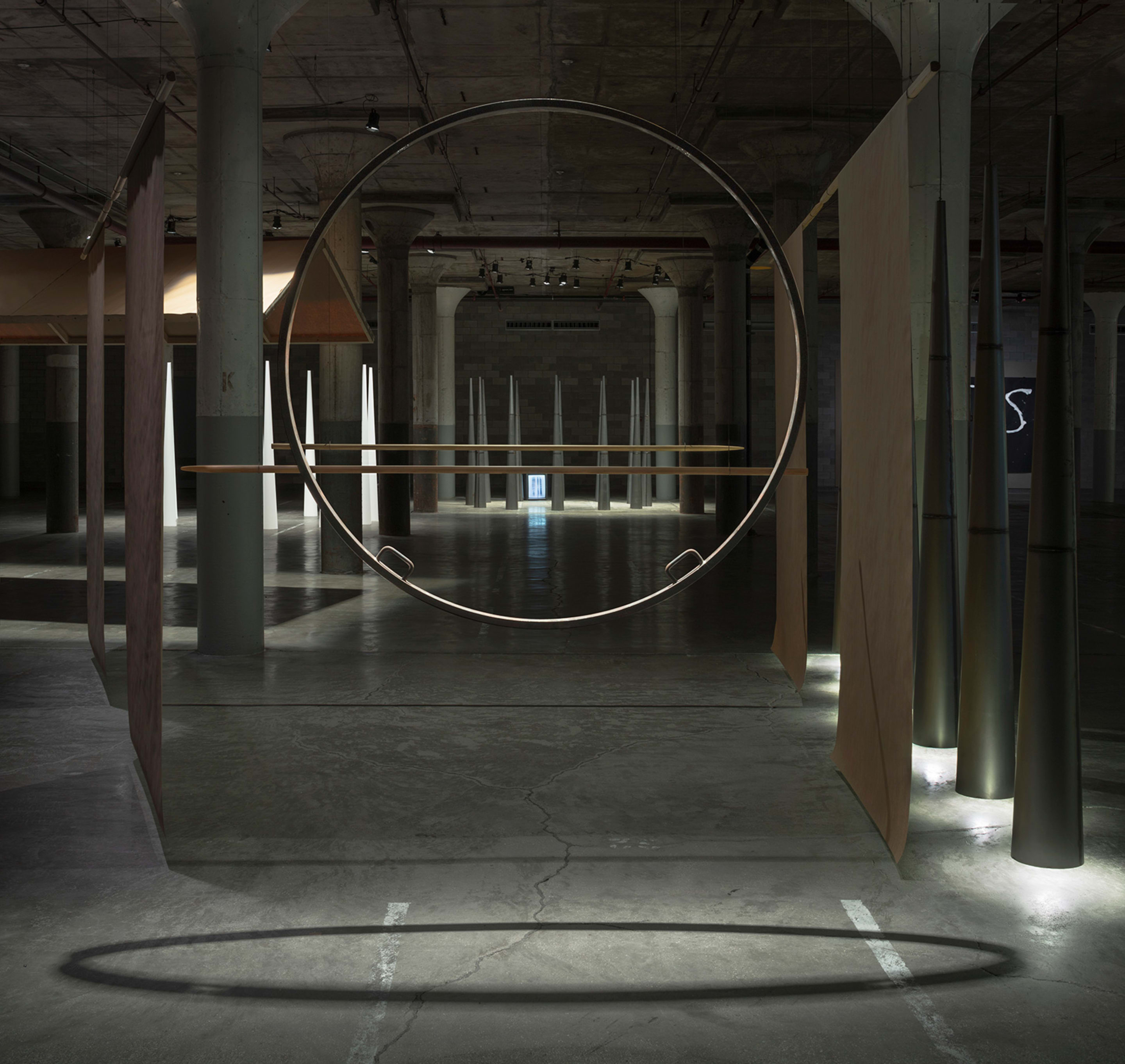
© Joan Jonas/Artists Rights Society (ARS), New York. Photo: Bill Jacobson Studio, New York. Courtesy Dia Art Foundation, New York.
Originally presented as a performance at Dia:Beacon with original piano score by Jason Moran, Joan Jonas created the installation The Shape, the Scent, the Feel of Things (2004-2006) in response to writings by German art historian Aby Warburg about his visit to the American Southwest in 1896. The two video works and the drawing presented below relate to this project. Jonas’ video works, which often evolve alongside her performances and installations, exemplify the artist’s unique approach to non-linear narration and circular repetition, renewed and ever different in each of her films as well as in her entire body of work.
Performance at Dia Beacon, Beacon, NY, 2006
Photo: Danny Bauer
Performance at Dia Beacon, Beacon, NY, 2006
Photo: Danny Bauer
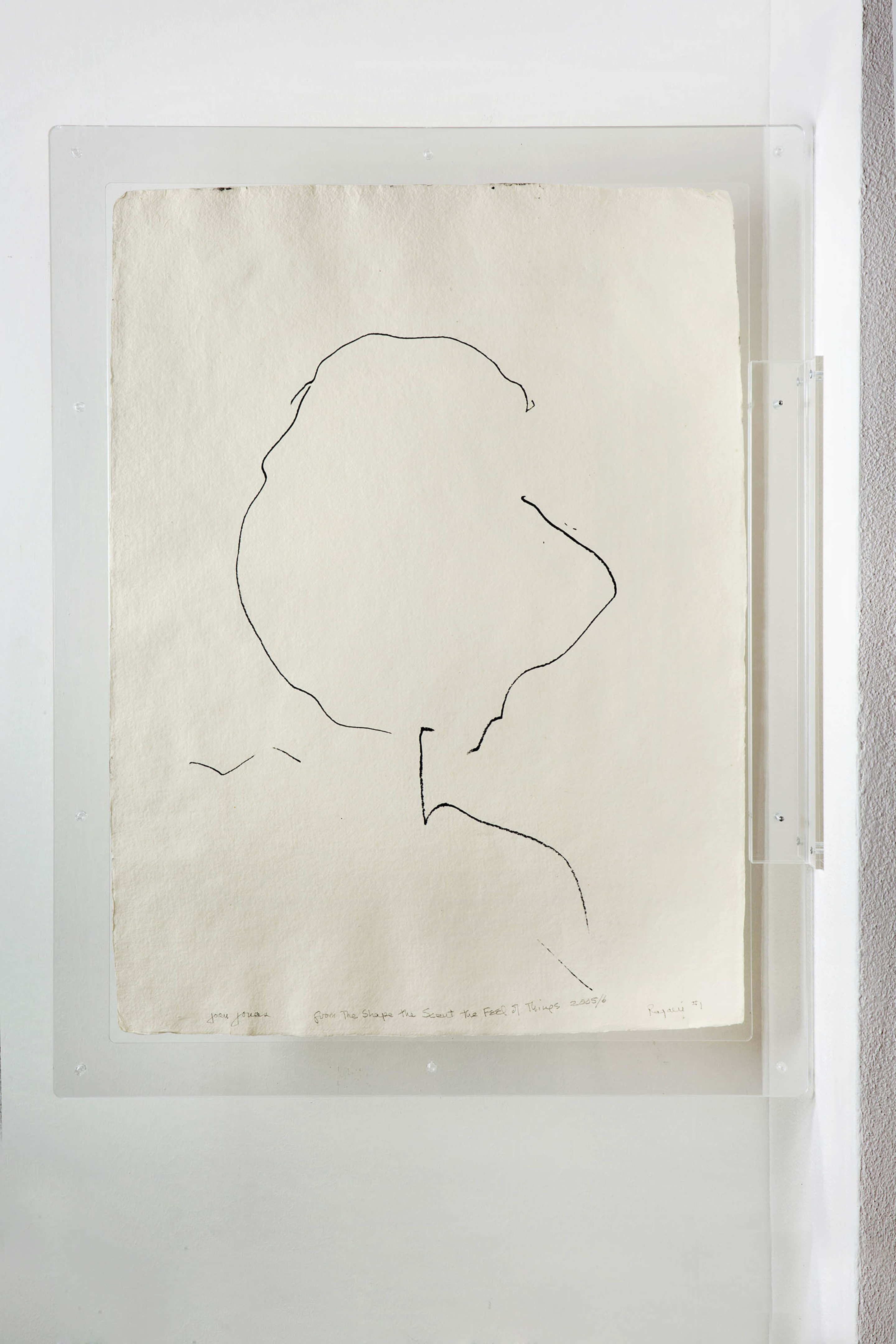
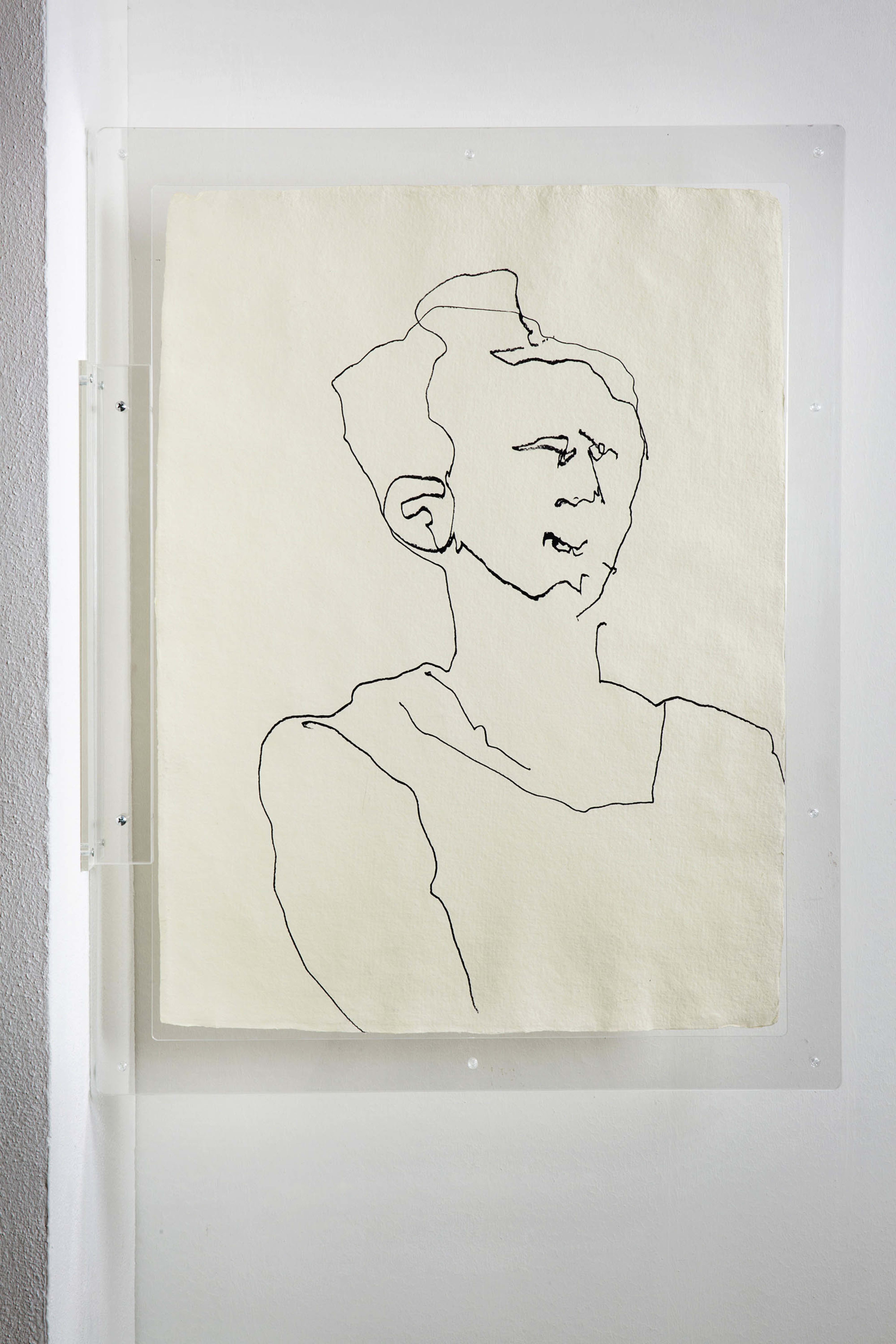
Magic Marker on paper
75 × 56 cm
In Mirror Improvisation (2005) a convex mirror – like a fisheye lens – distorts and reflects the image of two women in pink tutus and tall green paper hats, moving about on a sloping field by the woods, as they arrange and rearrange objects. The construction of a structure in front of the camera’s fixed point of view sees a succession of grey sawhorses, paper flags, round and square hammers, swords, metal hoops in an accelerated and slowed-down play.
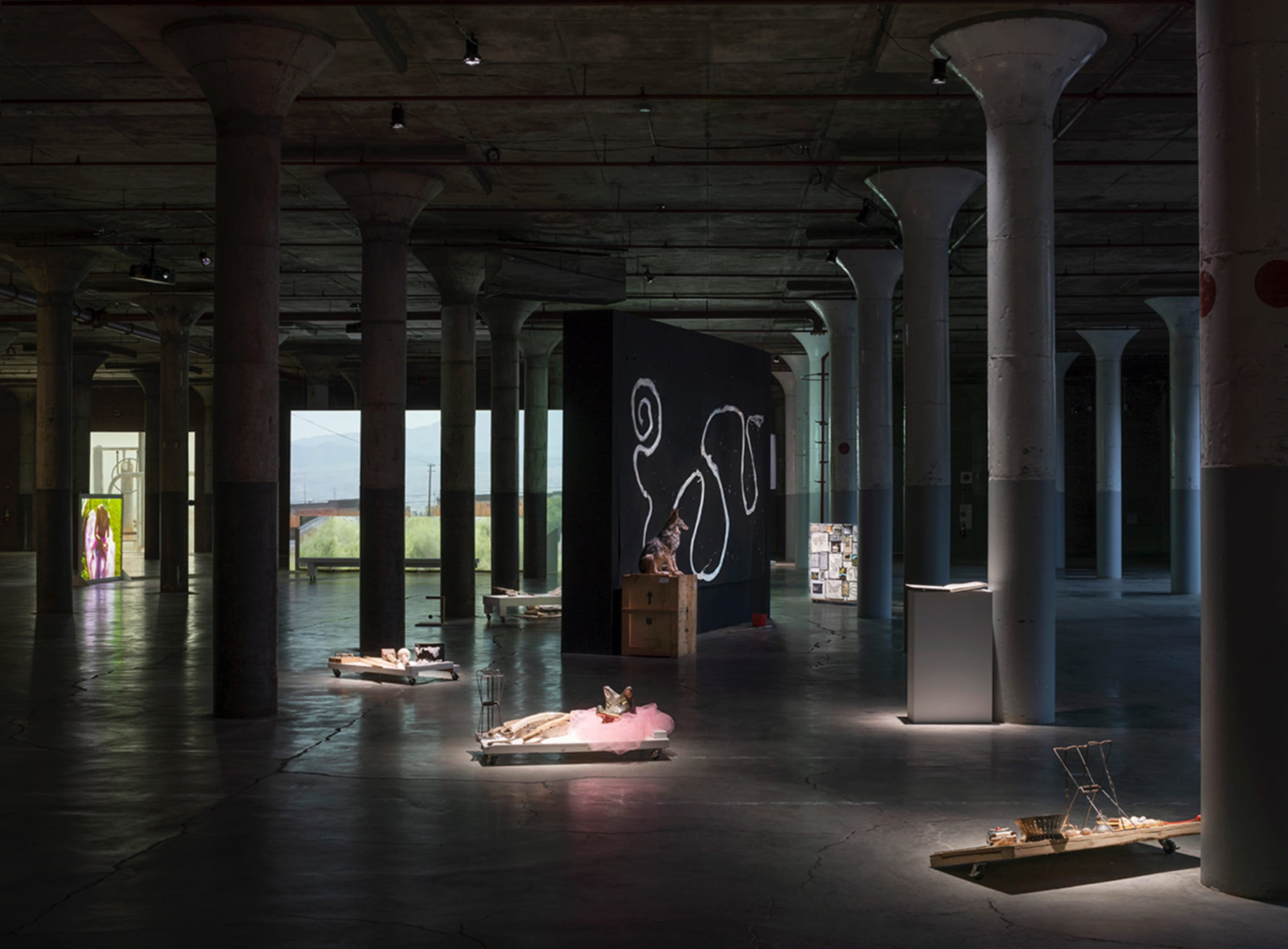
© Joan Jonas/Artists Rights Society (ARS), New York. Photo: Bill Jacobson Studio, New York. Courtesy Dia Art Foundation, New York.
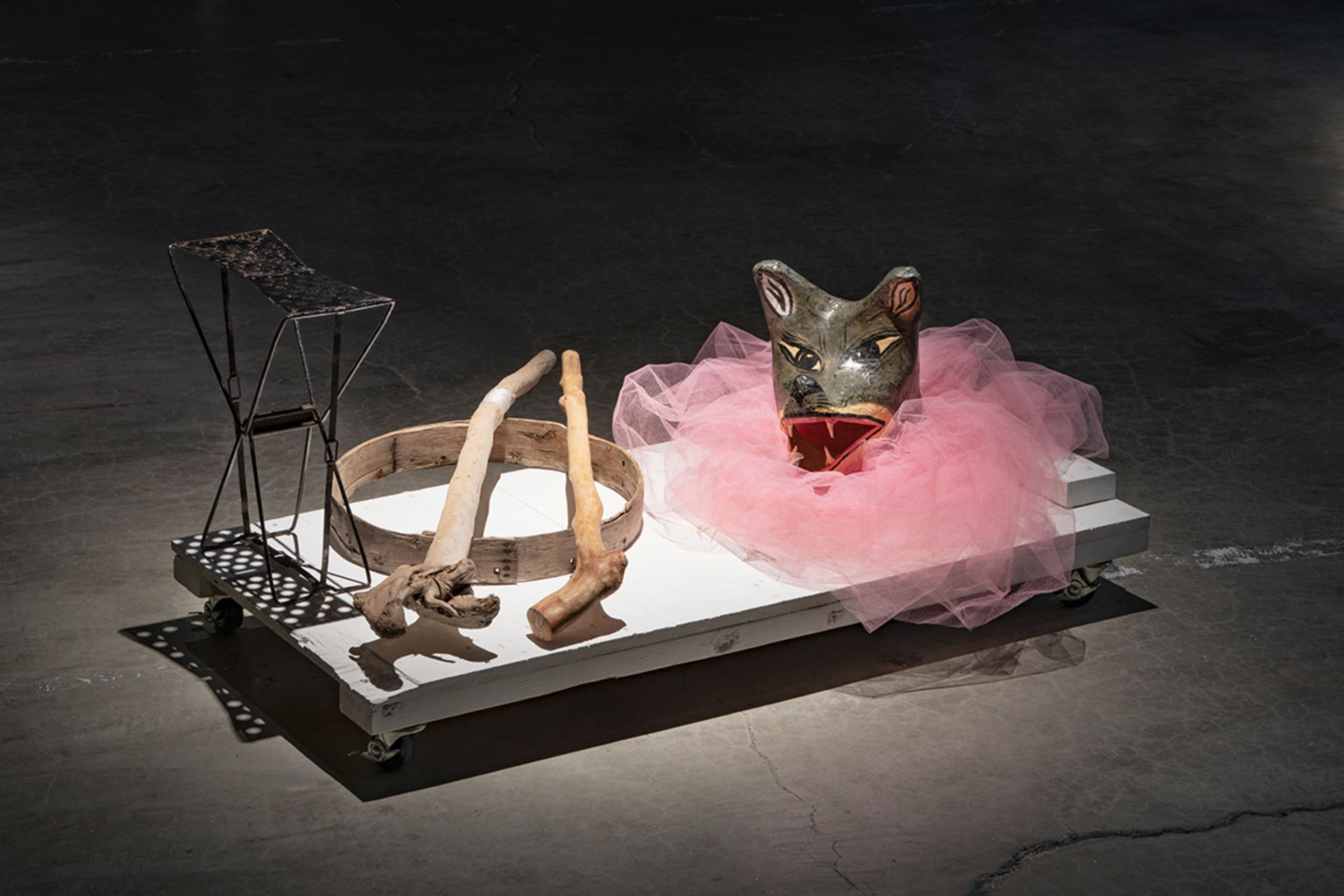
© Joan Jonas/Artists Rights Society (ARS), New York. Photo: Bill Jacobson Studio, New York. Courtesy Dia Art Foundation, New York.
The video Wolf Lights (2004-2005) is built on two layers: details of flashing gold and red neon signs on casino marquees in Las Vegas are the background to a female performing wearing a wolf-like mask. American musician and composer Jason Moran, a long time collaborator of Jonas, plays vibrantly in the background, giving a voice to the shimmering lights with the piano.
In 2007 Joan began working on Reading Dante, her next large-scale work after The Shape, the Scent, the Feel of Things (2004–06). Jonas translates the medieval allegory, borrowing small fragments of the text and greatly reinterpreting the story through performance, sound, drawings, video and installation. The artist dynamically visualizes the journey of the characters, merging their experience with her own through footage of travels and performance. The plethora of elements employed by Jonas, which initially may seem disparate, collectively form a complex, choreographed, and imaginative vision in the artist’s personal aesthetic language.
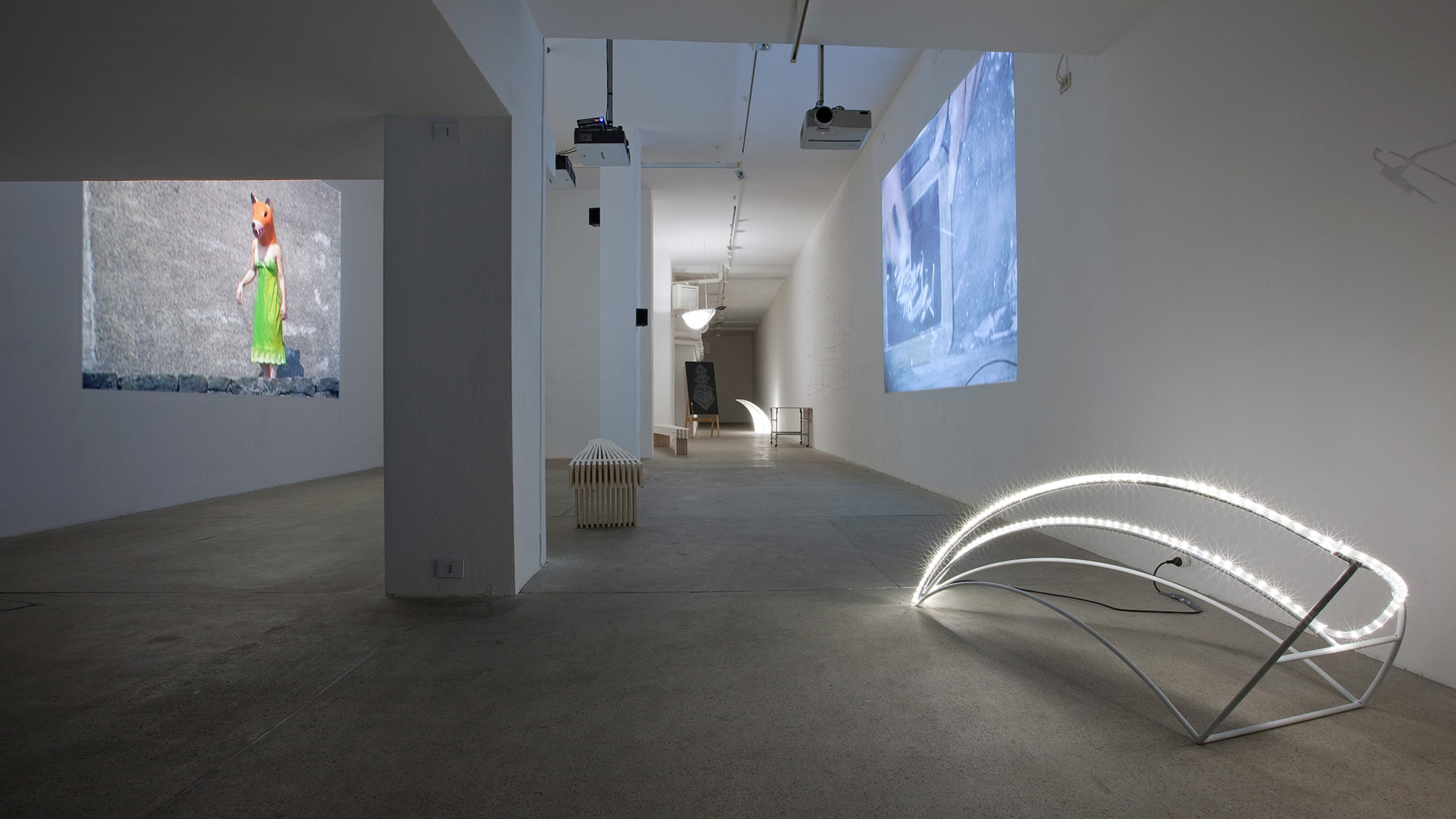
Installation view at Galleria Raffaella Cortese, via A. Stradella 7, Milan, 2010
Photo: Antonio Maniscalco
Reading Dante IV draws inspiration from Dante’s fourteenth-century Divine Comedy, a reoccurring topos of Jonas’s work since 2007. Each performance and installation becomes increasingly layered as the work transforms and develops. The first installation and performance of Reading Dante was at the 2008 Biennale of Sydney. Later that year Jonas performed the work at the Yokohama Triennale, and also performed a reading at The Isabella Stewart Gardner Museum in Boston, from which filmed excerpts are now incorporated into the current Dante video. Jonas was featured in the International Pavilion of the 2009 Venice Biennale where she installed Reading Dante II. Most recently, the artist presented Reading Dante II at the Performing Garage in New York as part of Performa ’09, and selected elements of this performance are featured in Reading Dante III and reviewed in the Italian Reading Dante IV.
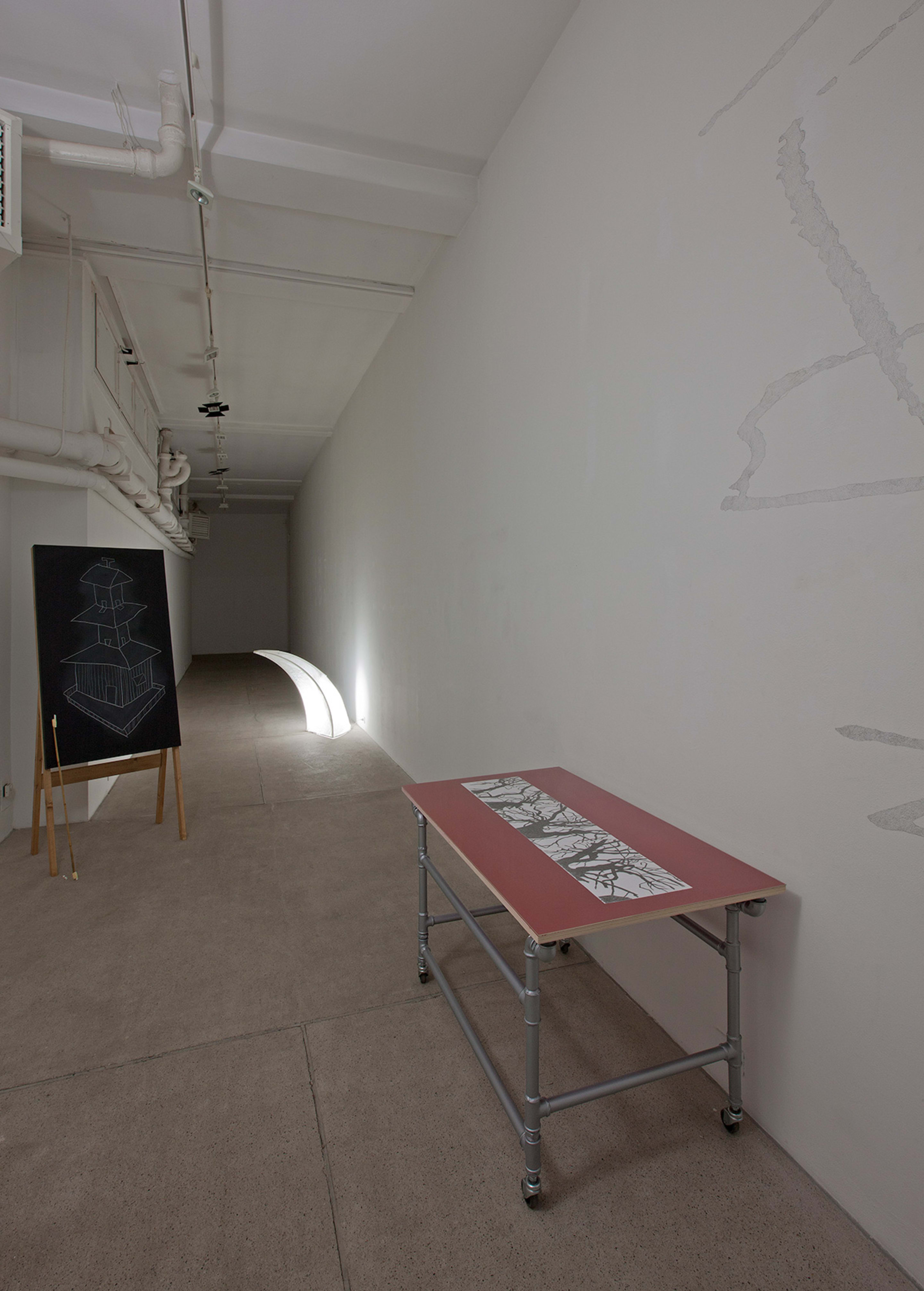
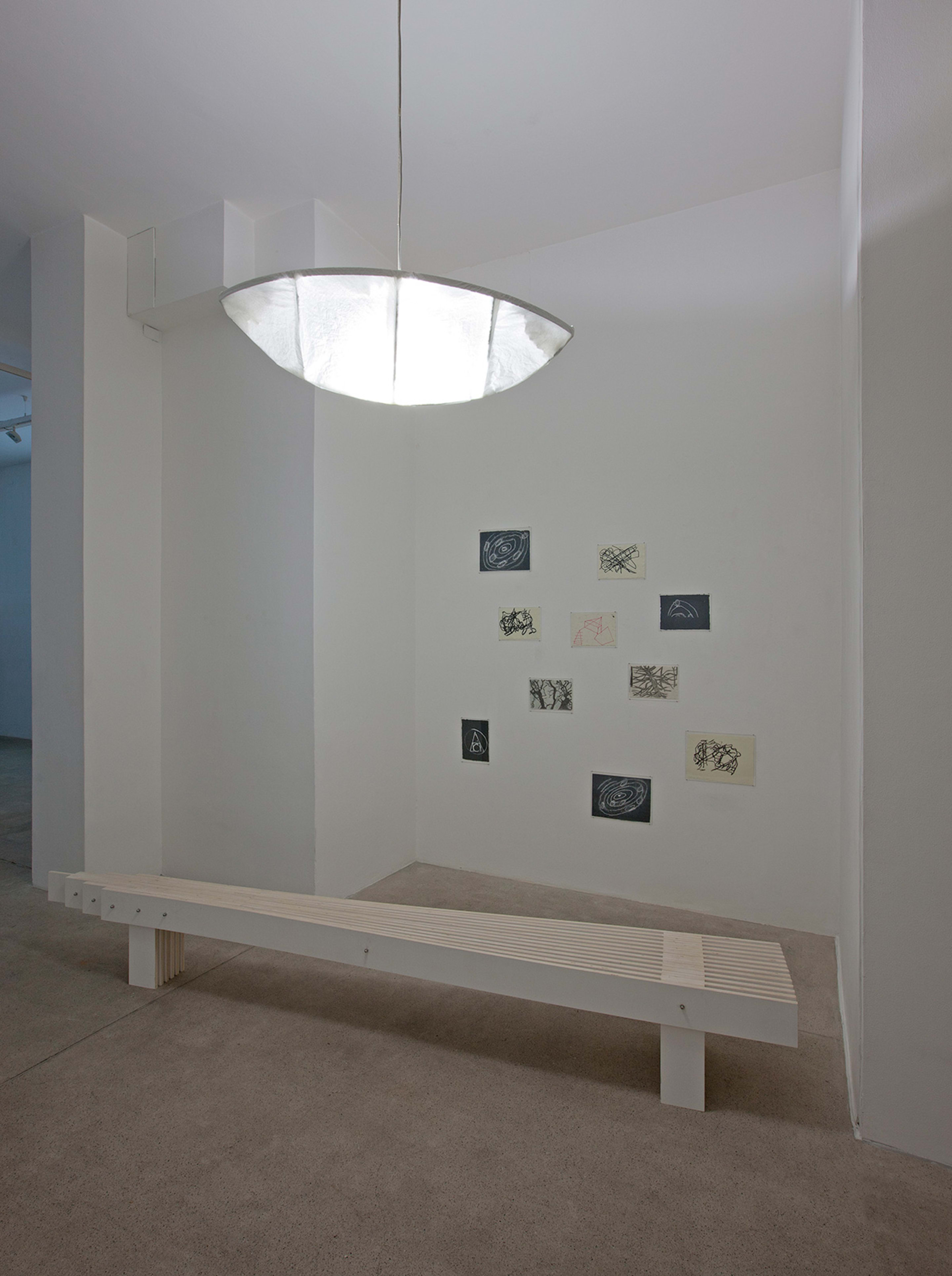
Joan Jonas' single-channel video Street Scene with Chalk, 1976/2008/2010, shows an excerpt of the performance Reading Dante II (2008/2009; Performa 09, New York, 2009). In this action the artist draws on a blackboard with white chalk and records her gestures on a screen where the video of a performance from 1976 is simultaneously projected. The images show Joan Jonas with fellow artist Pat Steir and a man who accidentally joined the scene, improvising movements on the streets of Downtown Manhattan using a large circle and metal cones.
On the occasion of Art Basel 2021 we exhibited Street Scene with Chalk with Viewing box, 2021, a structure designed by the artist to display this single-channel video work. The video was previously exhibited as part of Jonas' retrospective Light Time Tales at Pirelli HangarBicocca, Milan, Italy, 2014 (travelled to Malmö Konsthall, Malmö, Sweden, 2015).
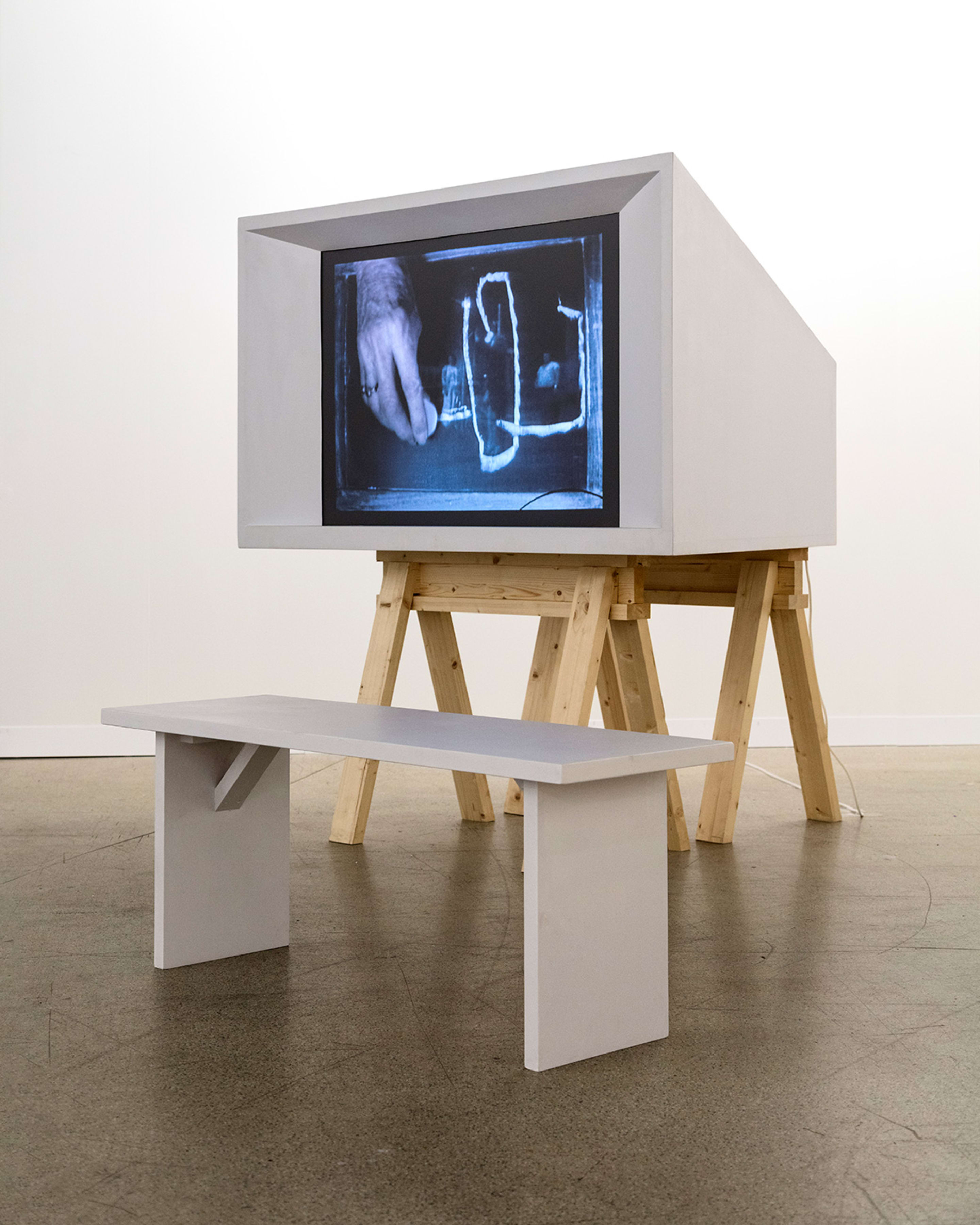
Video, color, sound (11' 04" loop) with painted MDF structure, wood trestles, painted MDF bench
165 × 150 × 109 cm overall dimensions of Viewing box and trestles
Photo: Renato Ghiazza
